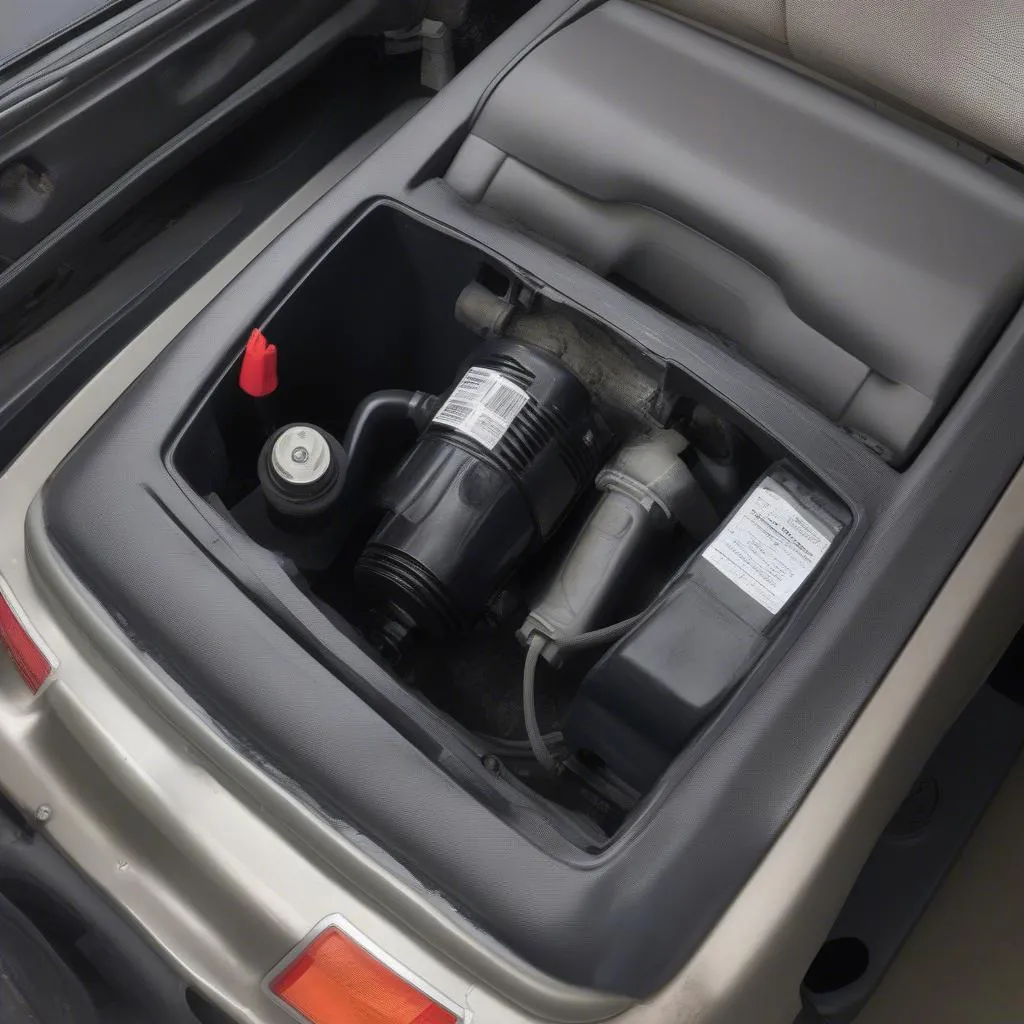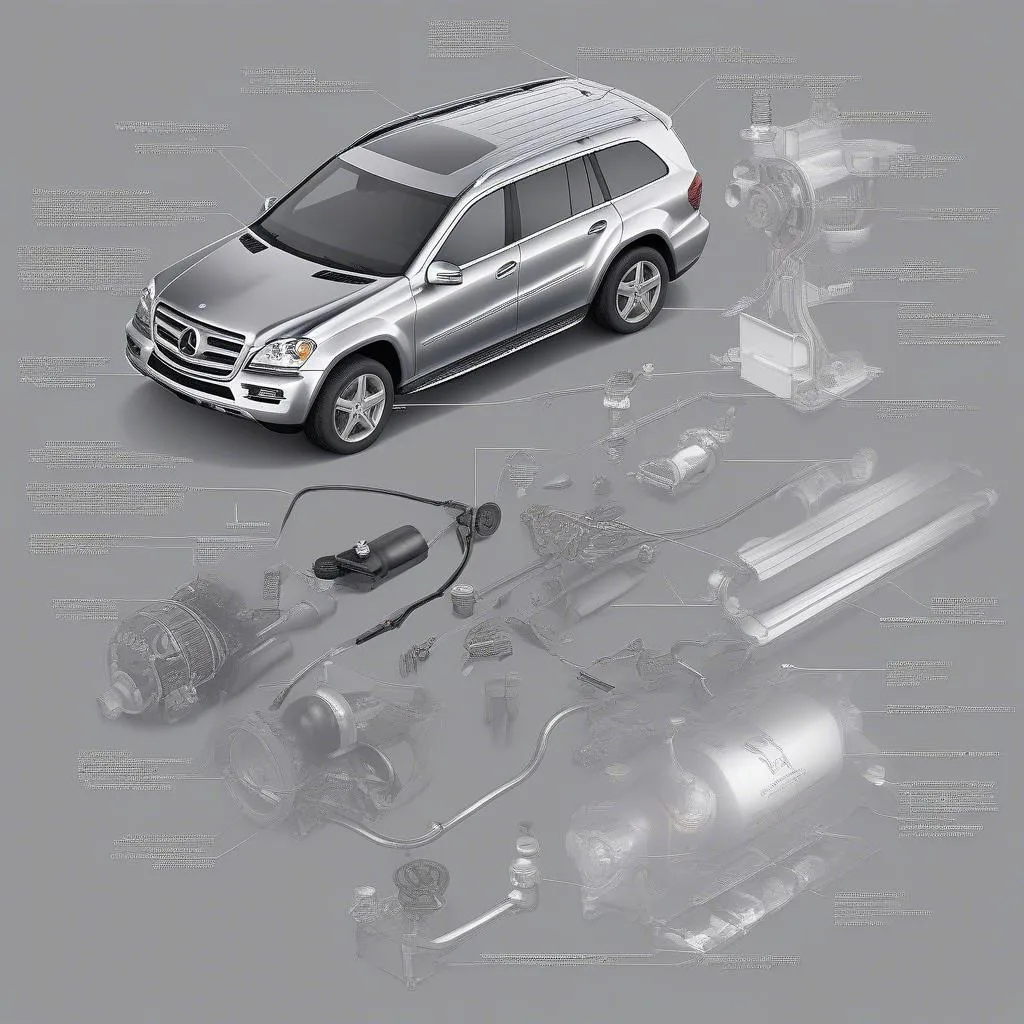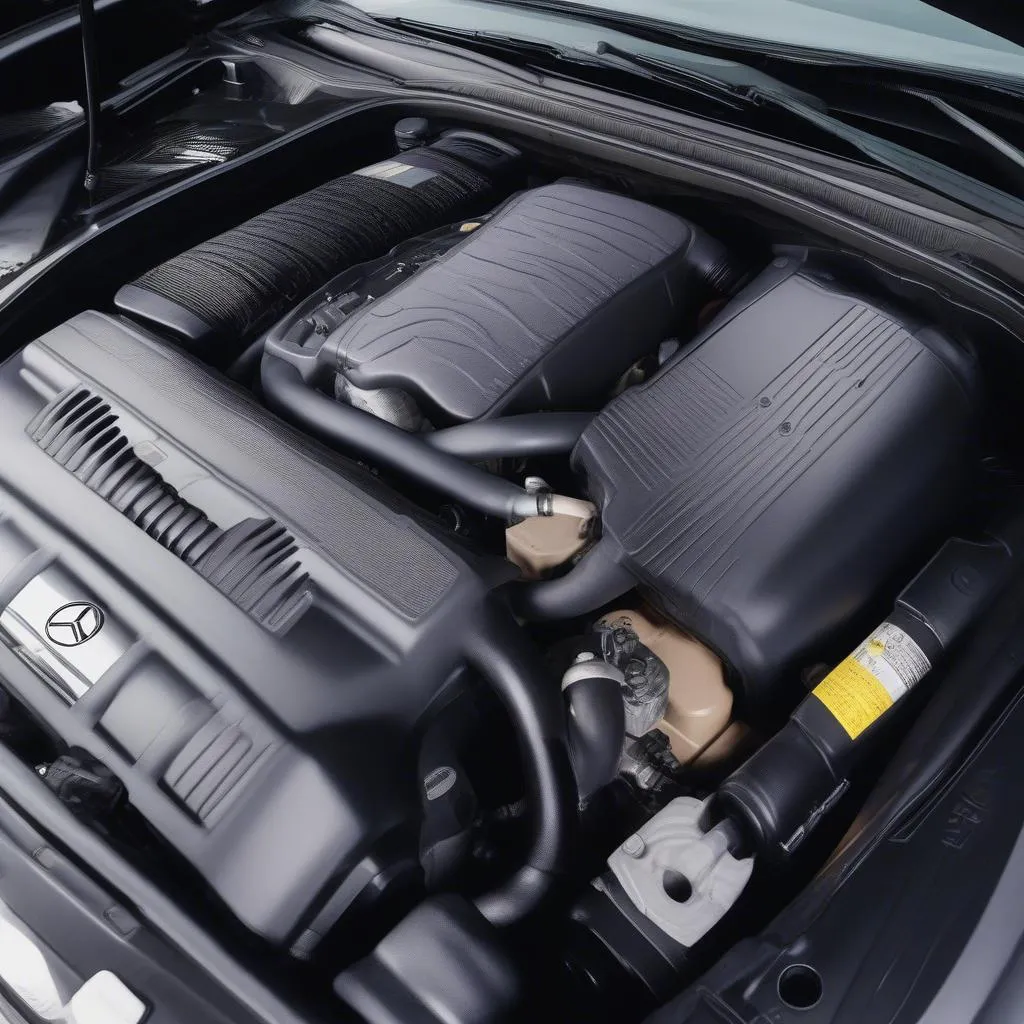Is your 2007 Mercedes GL450 sagging, especially after sitting overnight? Does it take longer than usual for your SUV to rise to its normal ride height? You might be dealing with the infamous air compressor lockup issue. This comprehensive guide will walk you through the possible causes, symptoms, and solutions to get your GL450 back to riding smoothly.
Understanding Air Compressor Lockup
Your Mercedes’ air suspension system utilizes an air compressor to pump air into the struts, controlling the vehicle’s height. Over time, the compressor can overheat, causing internal components to seize up, leading to a “lockup.”
“The most common reason for air compressor failure is simply wear and tear,” says John Miller, a veteran automotive engineer and author of “Modern Automotive Suspension Systems.” “These compressors are working hard, especially in older vehicles.”
Identifying the Culprit
While a locked-up air compressor is a common culprit, several other issues can mimic its symptoms. Here’s what to look out for:
- Slow Rising: Your GL450 takes noticeably longer to reach its standard ride height, especially after sitting idle.
- Compressor Runs Continuously: The compressor operates non-stop, even when the vehicle is at the correct height.
- Unusual Noises: A loud humming or grinding noise coming from the compressor area (usually located under the passenger side, behind the front wheel).
- Warning Lights: The dashboard might display warnings like “Airmatic Malfunction” or “Suspension Fault.”
Tools for the Job
Before diving into the fix, gather these essential tools:
- Socket Wrench Set: To remove bolts and access the compressor.
- Torx Bit Set: Mercedes often uses Torx screws.
- Flathead Screwdriver: For prying off plastic covers and connectors.
- Safety Glasses and Gloves: Always prioritize safety when working on your vehicle.
- Diagnostic Tool: To read fault codes and reset the system. Products like those offered by Cardiagtech can provide comprehensive diagnostic capabilities.
Troubleshooting and Repair Options
Here’s a step-by-step guide to diagnose and potentially fix the issue:
1. Check for Leaks:
Thoroughly inspect the air lines, struts, and air springs for any visible damage or signs of air leaks. Even a small leak can overwork the compressor and lead to lockup.
2. Inspect the Relay and Fuse:
Locate the air suspension relay and fuse (consult your owner’s manual). A blown fuse or faulty relay can disrupt power to the compressor.
3. Diagnose with a Scanner:
Connect a diagnostic scanner, such as those from CARDIAGTECH, to retrieve fault codes stored in your GL450’s system. These codes provide valuable insights into the root cause of the issue.
4. Compressor Replacement (If Necessary):
If the compressor is confirmed to be faulty, replacement is typically the most reliable solution.
 Air Compressor Location
Air Compressor Location
FAQs:
Q: Can I drive my GL450 with a locked-up air compressor?
While technically possible for short distances, it’s not recommended. Driving with a faulty compressor can cause further damage to the suspension system and potentially lead to unsafe driving conditions.
Q: Are aftermarket air compressors a good alternative?
Yes, reputable aftermarket brands offer cost-effective alternatives to OEM compressors. Ensure the replacement is compatible with your GL450’s model year.
Q: How often should I service my air suspension system?
Regular checks every 30,000 miles are recommended to ensure optimal performance.
 Air Suspension Diagram
Air Suspension Diagram
Conclusion
A malfunctioning air compressor can put a damper on your Mercedes GL450’s otherwise smooth ride. By following this guide and using the right diagnostic tools, you can pinpoint the problem and get your SUV back to gliding effortlessly down the road.
Remember, while DIY repairs can be rewarding, don’t hesitate to consult with a qualified mechanic, especially if you’re unsure about a particular step or if the issue persists after troubleshooting.


